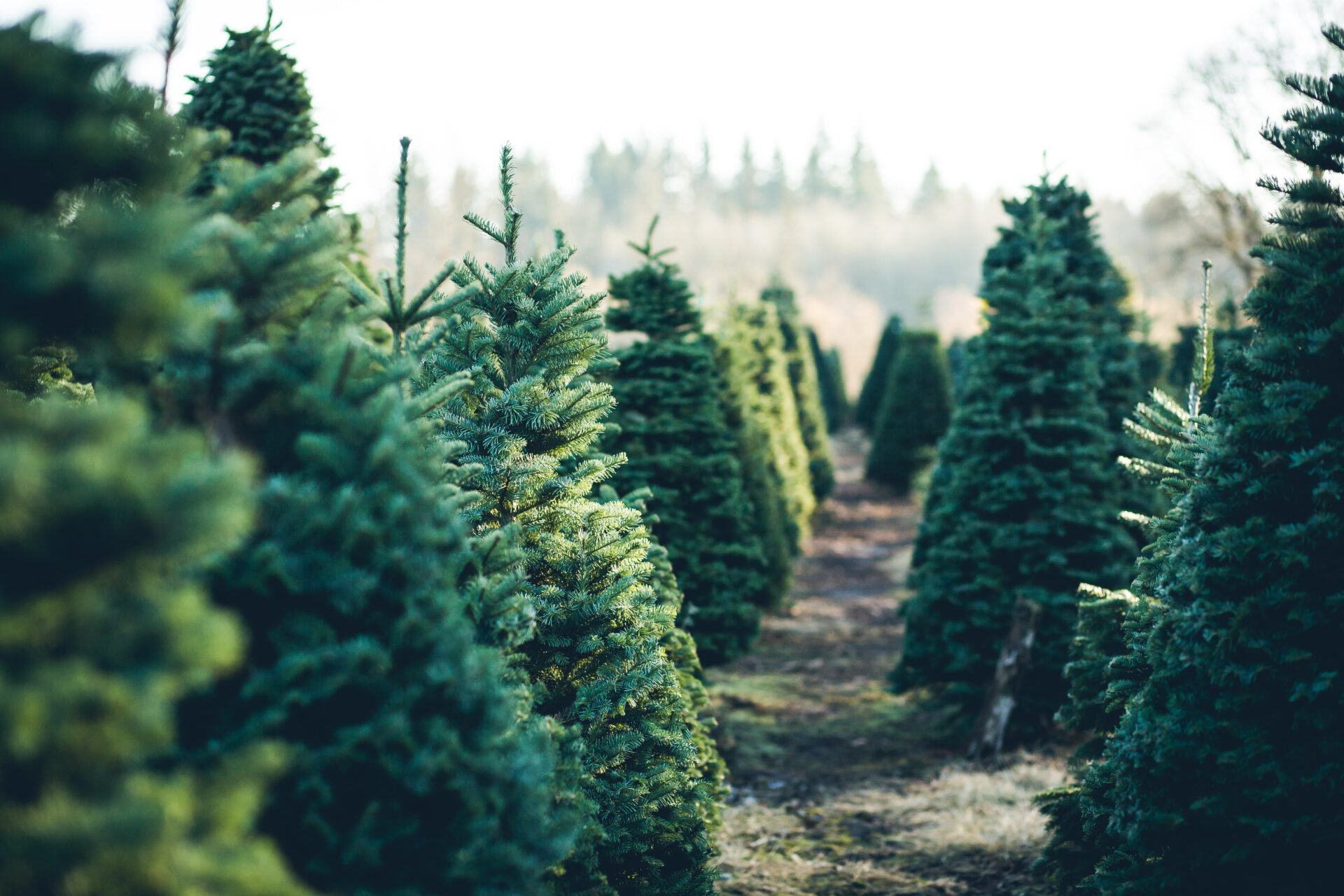News

Christmas trees – real or artificial?
We buy around 7 million real Christmas trees each year with 80% grown in 1500 UK based Christmas tree farms. It’s estimated that one hectare of trees adds enough oxygen to the environment for 44 people during the tree’s lifespan.
In comparison the carbon footprint of an artificial Christmas tree is 40 kg of CO₂. The majority of these are manufactured in China using petrochemicals which are then flown across the globe. Consequently, artificial Christmas tree production results in more CO₂ than natural trees, which have a carbon footprint of 8.1 kg CO₂ per year (if correctly recycled). If the tree is locally sourced the carbon footprint is further reduced. It’s estimated that only when a fake tree is used for 20 years or more will it equal the footprint of a single natural tree grown in the UK.
But there are additional considerations to sustainability and some potential health factors that may help you choose which type of tree to bring into your living space. By understanding how chemicals are used in the production of both real and artificial trees it’s possible to make a more informed choice.
Reasons to go organic with your Christmas tree
Chemical free, organic Christmas trees are grown without using any pesticides and herbicides which avoids the use of these harmful chemicals. They do take longer to grow which can make them more expensive, but they are grown without using any chemicals to keep weeds and pests at bay, which also encourages wildlife to flourish. So if you choose to bring an organic Christmas tree into your home you will be reducing your exposure to herbicides and pesticides, and doing your bit for the environment.
One of the most commonly used herbicides in Christmas tree farming is glyphosate, used to control the weeds that can damage growth and improve quality of the foliage. Glyphosate is classified by the WHO as “probably carcinogenic” to humans. Opinion is divided about the health effects of exposure to glyphosate, but it has been linked with an increased risk of some types of cancer. But if organic isn’t an option, where possible, source your tree locally and look for FSC certified trees grown responsibly with minimal pesticide use.
When you get your tree home, leave it outside for as long as possible before bringing it indoors to decorate – this will give any pesticides or herbicides used during the growing process or sprayed prior to tree harvesting more time to release into ambient air and not your living space.
Artificial Christmas trees
Most artificial trees are made using plastics derived from petroleum, and metal for the frame and branches. The most commonly used plastics are PVC and polyethylene (PE) chosen for their flame retardancy, they burn at higher temperatures improving plastic Christmas trees safety. However, PVC is often stabilised using phthalates, widely thought to have endocrine disrupting properties and harmful effects on our health.
But fake trees are problematic for another health reason – they reduce the quality of indoor air in our homes. Some of the chemicals used in the manufacturing process of Christmas trees are released slowly into ambient air in a process known as offgassing, where plastics release micro particles into indoor air which we can inhale into the body. Offgassing from plastic trees is intensified in warm rooms, especially when tree lights are attached, further warming the plastic. To reduce this effect, stand the tree in a cooler spot and ventilate your room whenever possible.
If you buy a new artificial Christmas tree, remove it from packaging and stand it outside or in a well-ventilated room or garage for as long as possible before using. If you have an indoor HEPA air filter, leave the tree in a room for a few days to allow the filter to extract some (but not all) of the chemicals released into ambient air. Keep children away from artificial Christmas trees and if they do handle them, rinse hands immediately to wash away any chemical traces. Consider wearing gloves when putting the tree up as well.
Grow your own Christmas tree
It’s very easy to grow your own Christmas tree without using any chemicals. Christmas trees in pots are widely available and can make a nice long term project if you continue growing it on outside when the festive season is over, re-potting it each year, and bringing it back inside each Christmas. Alternatively, plant your tree outside in your garden and leave it there to flourish for years to come, decorating it with exterior lights.
More reading
The British Tree Growers Association






